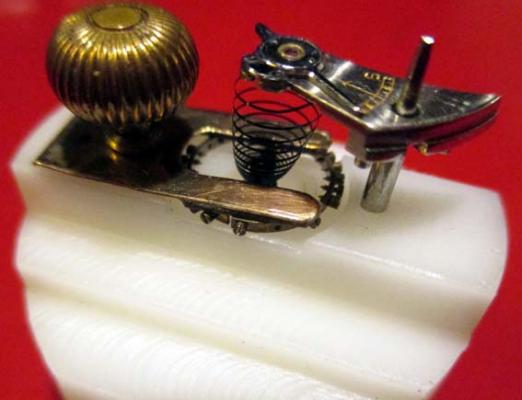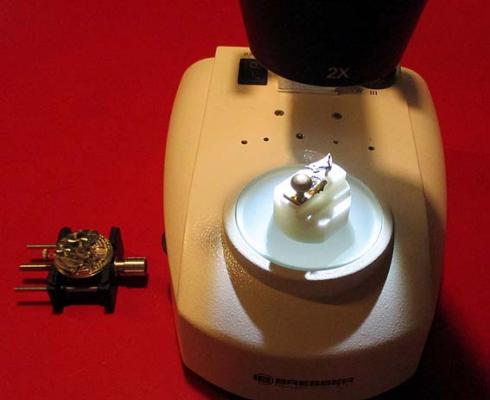Search the Community
Showing results for tags 'greiner'.
-
My son does watch and clock repair on a full time basis. Hallicras Works A few years ago, someone gave him two Greiner watch timing devices. I have a background in electronics, but my skills in vacuum tube circuits is a bit rusty. Finally found some time, motivation, friend to try to get them to work. After some minor cleanup, they look to be in good condition. No obviously failed electronic components. They must have been expensive machines when new. They are really well engineered and constructed. Motormikrophon ML61 . We have no manuals, or schematic diagrams for this one. I've sent requests to Greiner in Switzerland, as well as a Greiner rep in UK, and they don't have any documentation. I've connected the small coax audio cable from the MotorMikrophon to a Guitar amp, and a PC, and the microphone is working fine. I can manually press down on the sequencing relays and get the motor to rotate the watch holder / microphone. It will not cycle the rotation by itself, regardless of the various switch positions we've tried. Not sure if it needs a DIN connector on the back to make it operate. I thought it might be some Resistive/Capacitor charging circuit that might reach a threshold voltage and trip a relay to start a rotation sequence. But so far, no luck. Chronografic Super. We found a schematic diagram for this one, but no operation manual. The electronics sing a bit in the various switch positions for different crystal controlled Beat per Hour settings. The synchronous motor feels like it has a bit of a pull, but will not start to rotate on it's own, or with a nudge. Not sure if the leaver is used to kick it into operation. With some 'noise' on the microphone input, we can sort of get some hammer pounding noise to mark the paper with dots. It would be nice to get them working again. If the Chronografic can't work, I was thinking of connecting the MotorMikrophon to a PC and make some kind of a PC based software to enable watch timing. So, my First ask is for some operating or service manuals of any type or language, or any first hand knowledge of how to get them working. Thanks folks.
- 16 replies
-
- greiner
- motormikrophon
-
(and 1 more)
Tagged with:
-
Hi everybody! My name is Manfred und i live in Austria. Last year i began to repair watches as a hobby and i like it more und more (by the way the watch repair channel is great). Because of my interest i purchased an old Greiner timing machine (Chronografic Super) but i have one problem: The carbon paper strip is not very long anymore, so where can i get such an original strip? If somebody wants to sell it or knows a www-adress i would be glad. Thanks and regards (i hope my English isn't too bad)
- 3 replies
-
- greiner
- timing machine
-
(and 2 more)
Tagged with:
-
It's a method devised by Greiner in the late 50's or early 60's which allows the use of the timing machine to find the heavy spot when you have an amount of positional error. I understand that their method rendered the 'static poising' method to be obsolete (their words, not mine). In the most basic form the method is to test in 8 positions (0 to 7) in the vertical, and find the position where the watch is gaining the most. The starting position is to draw an imaginary line from the escape wheel centre to the balance centre and set the movement on the microphone with the line vertical, the balance being above the escape wheel. This is position '0' Each test you turn the movement clockwise by 45º, the first = point 1 second = point 2 and so on. When you find your heavy spot (where the watch is gaining the most) take the balance off the watch and flip it over so the impulse pin is facing up. Draw an imaginary line from the staff through the impulse pin to the balance wheel rim. This is point 0. At 45º from this point is point '1' and 90º is point 2. Point 4 is at 180º on the balance rim and hopefully you get the idea. So whatever position is gaining the most on the timing machine, you would either reduce weight at that point or add weight (timing washer) on the opposite side of the heavy spot. And this depends on the rate when the watch is in the horizontal. If the watch is slower in the horizontal then you will lighten the screw at the point found. If the watch is faster in the horizontal then you will lighten the screw opposite the point found. If the watch is running at zero rate in the horizontal then you would lighten the screw nearest the point found and add weight to the opposite of that point in equal measure to the lightening. If the balance has no screws then the only choice to be had would be to remove material at the heavy spot, it's not possible to add weight. Two things to note is that, when testing on the timing machine, the watch should be wound down enough so that the amplitude is between 150º and 180º And secondly the watch must be cleaned and properly lubricated first. I hope my overview is clear, it's late and I have enjoyed a few fingers this evening :)
- 13 replies
-
- 5
-

-

-
- greiner
- dynamic poising
-
(and 2 more)
Tagged with:
-
I am continuing with my restoration of early IWC Cal. 64 and Cal 64T watch movements. Even after cleaning and oiling the timing is often out by more than the index lever can accomodate. Today the movement was running slow, however, the timing screws on the balance were each 3 turns unscrewed. This provided me with the necessary adjustment to increase the beat rate. But it can be a fiddly job, particularly for my unsteady hands. Here is my solution - a small clamp to hold the balance while I turn the screws with a 0.5 mm Horotec driver : The base is milled out of Delrin (Nylon), the finger clamp is from copper-beryllium shim with a thin leather lining on the balance side. The screw-down piece is made from a from a pocket watch stem and crown. Here it is under the x20 binocular microscope with perfect vision and access to the timing screws.
- 14 replies
-
- 2
-

-
- Balance screws
- dynamic poising
-
(and 3 more)
Tagged with:


